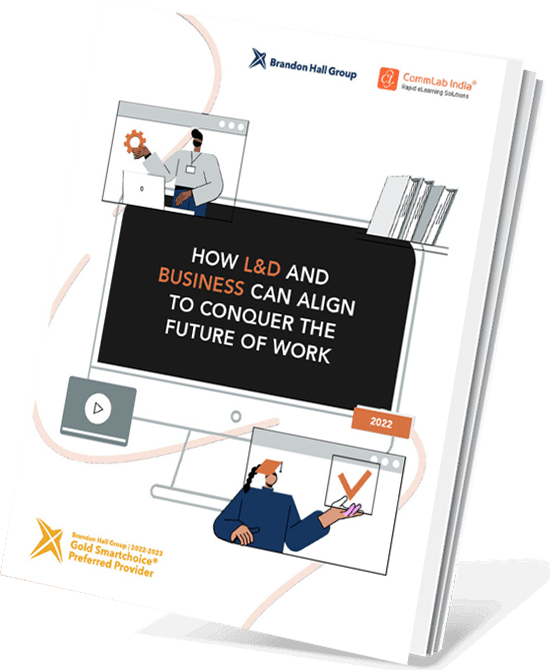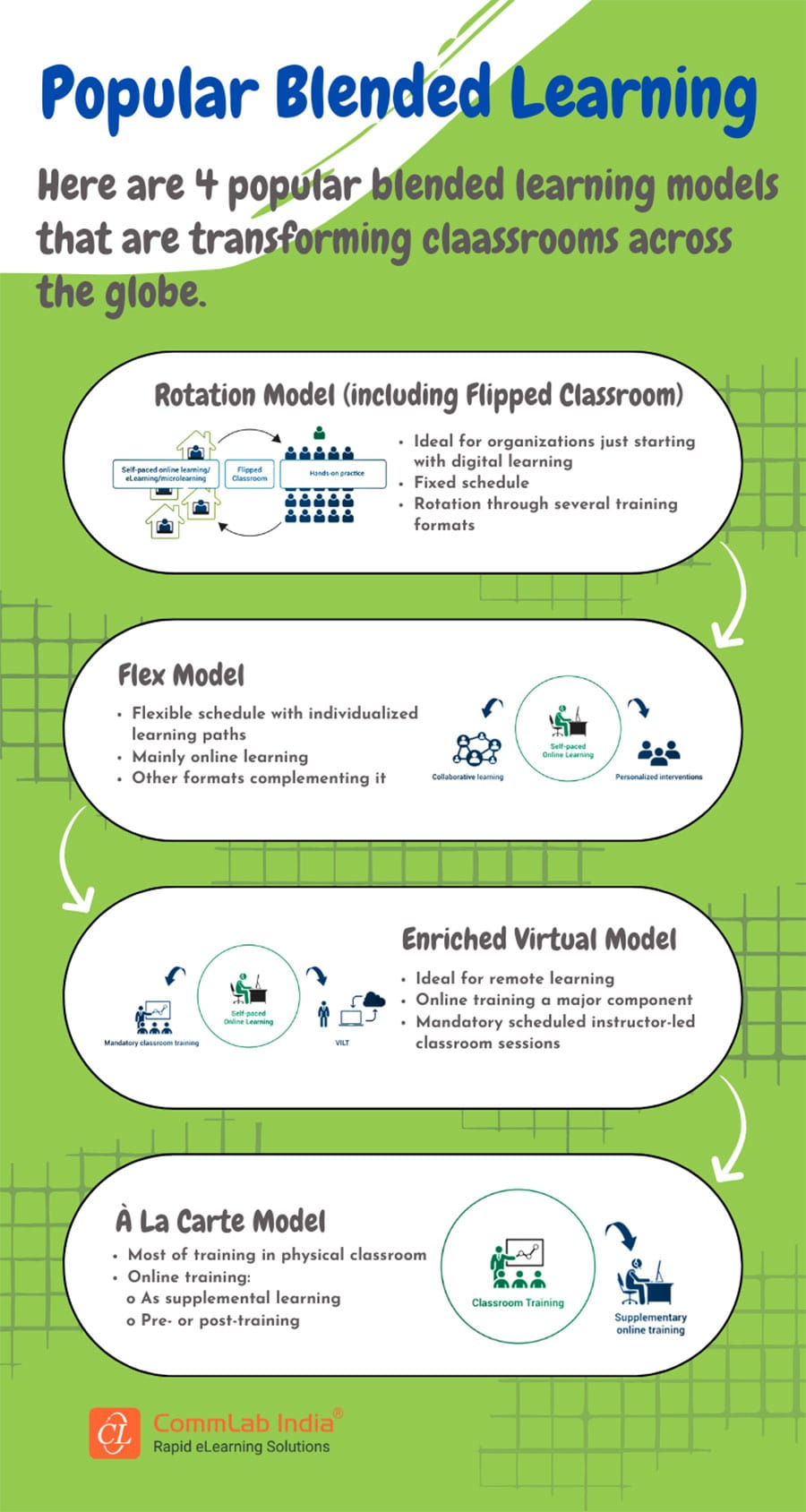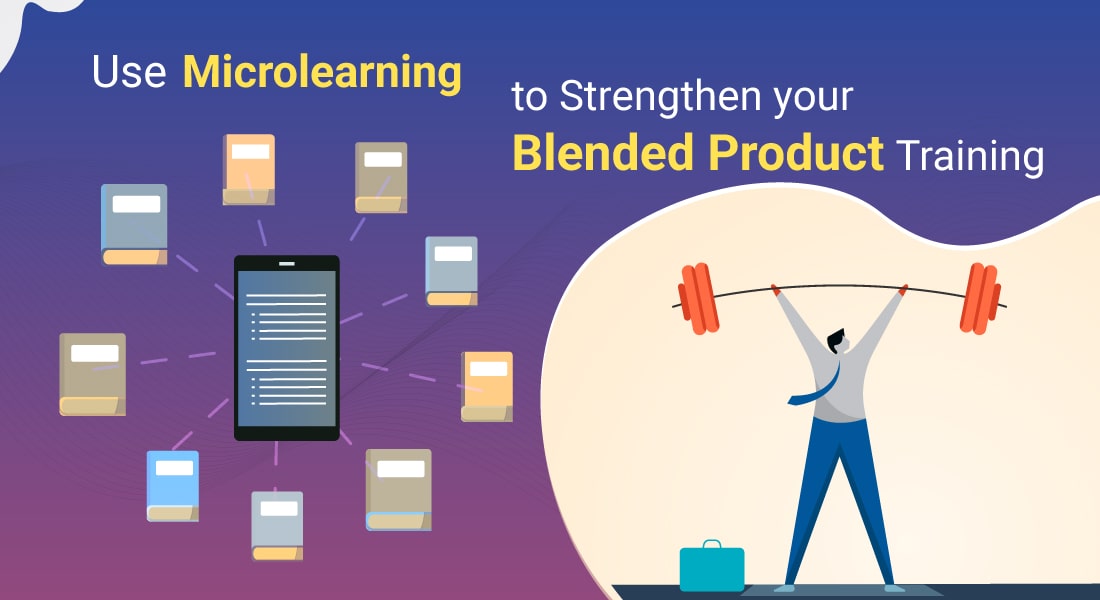4 Popular Blended Learning Models You Can’t Miss! [Infographic]
![4 Popular Blended Learning Models You Can’t Miss! [Infographic] 4 Popular Blended Learning Models You Can’t Miss! [Infographic]](https://blog.commlabindia.com/hubfs/blogs/popular-blended-learning-models-infographic-1.jpg)
Imagine how a chef skillfully combines different ingredients to create a culinary masterpiece. In the world of corporate training, blended learning is that perfect approach masterpiece. It seamlessly integrates the best aspects of classroom training and online training to provide learners with an enriching and immersive learning experience. In this blog, we'll explore the concept of blended learning, its importance in corporate training, and popular blended learning models.
Are you ready? Let’s begin.
→ Download eBook: How L&D And Business Can Align to Conquer The Future Of Work
Table of Contents
- What is Blended Learning?
- What is the Importance of Blended Learning in Corporate Training?
- What are the Popular Blended Learning Models?
What is Blended Learning?
Blended learning refers to the integration of traditional classroom training with online learning components. It allows learners to benefit from both in-person interactions with instructors and peers, as well as the flexibility and accessibility of digital resources.
Blended learning often involves a mix of face-to-face discussions, online activities and assignments, etc. This provides a more diverse and effective learning experience. The goal of blended learning is to optimize the benefits of both offline and online learning to foster learner engagement, collaboration, andself-directed learning.
Here’s a short video highlighting the benefits of blended learning
What is the Importance of Blended Learning in Corporate Training?
Boosts Engagement and Knowledge Retention
Traditional classroom training can sometimes feel monotonous, leading to glazed eyes and foggy memories. Blended learning breaks the mold of passive learning by incorporating interactive online modules, gamification elements, and simulations. This variety keeps trainees engaged and stimulates their curiosity to solidify the knowledge in their minds more effectively.
Accommodates Busy Schedules and Diverse Learning Styles
Employees juggle demanding workloads, family commitments, and personal learning preferences. Blended learning offers the flexibility they crave. Online modules allow them to learn at their own pace, on their own devices, and revisit materials as needed. This caters to visual learners, auditory learners, and kinesthetic learners alike, maximizing learner engagement and knowledge absorption for everyone.

How L&D And Business Can Align to Conquer the Future Of Work
Bridging the Gap Between Organizational and Individual Goals!
- Learning and Business Partnership
- Learning Strategies Shaping the Future
- Changing Role of Learning Professionals
- Learning to Solve Business Challenges
- And More!
Enables Cost-Effectiveness and Scalability
Blended learning can significantly reduce training costs. Online modules eliminate the need for physical training materials and instructor travel expenses. Moreover, the same online content can be easily scaled to train large groups of employees across various locations, saving time and resources.
Supports Collaboration and Social Learning
While online modules provide individual learning opportunities, blended learning doesn't neglect the power of social interaction. In-person workshops, group discussions, and collaborative projects foster teamwork, communication skills, and peer-to-peer knowledge sharing. This social aspect is invaluable for building a strong company culture and promoting a sense of community among employees.
Data-Driven Insights for Continuous Improvement
Using Learning Management Systems (LMS) in blended learning can provide valuable data on employee progress, engagement levels, and areas of difficulty. This data allows trainers to personalize learning paths, identify knowledge gaps, and continuously improve the training program for better outcomes.
What are the Popular Blended Learning Models?
Summing it Up!
Blended learning captivates the minds of corporate learners by offering a mix of traditional and digital learning methods. In an ever-evolving business landscape, blended learning ensures that learners make the most of their training experience. This helps organizations stay ahead of their competition and better equipped for success.
Explore our eBook to unlock strategies for cracking the success code in the future of work. Gain valuable insights into solving business challenges and aligning organizational goals with individual aspirations. Download now to gain a competitive edge and ensure sustained success.
Editor’s note: This post was originally published on February 05, 2024 and has been updated for comprehensiveness.






